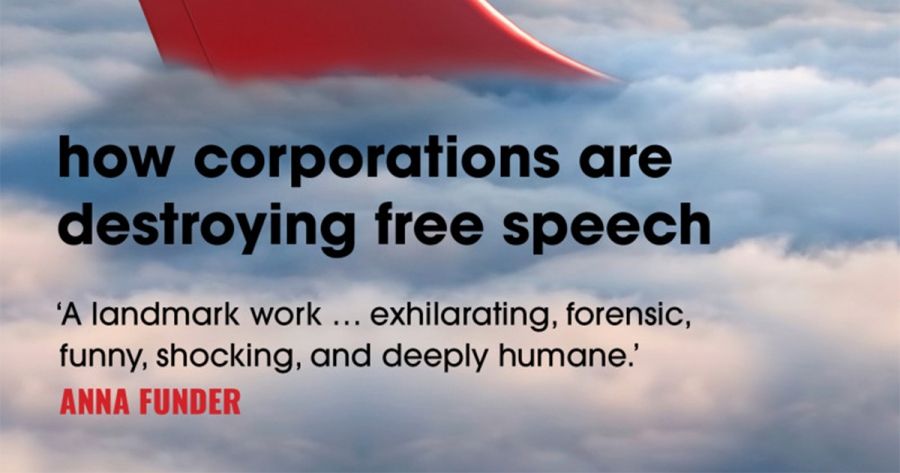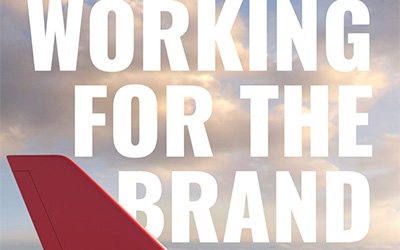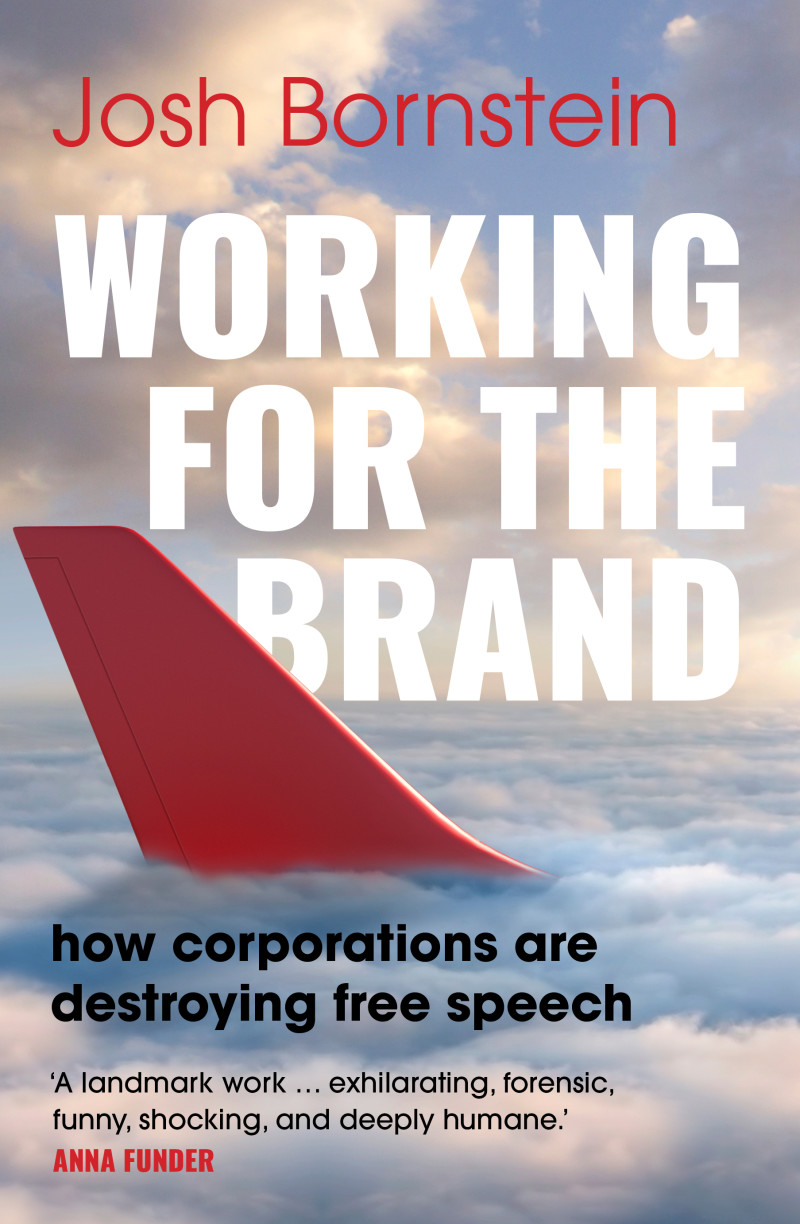
- Free Article: No
- Contents Category: Business
- Review Article: Yes
- Article Title: Private lives
- Article Subtitle: A timely book about workers’ rights
- Online Only: No
- Custom Highlight Text:
In November 1997, Bryce Rose was travelling for work in northern New South Wales. Rose was a technical officer with Telstra, and his help was needed in the Armidale area to address a surge in reported faults. Required to spend a few nights away from home, he arranged to share a hotel room with a colleague. On the third night, the pair went for dinner and then on to a nightclub. Much alcohol was consumed, and there was an altercation between them. Around 3 am, Rose returned to the hotel room, only to find the other man waiting for him. The furniture had been rearranged to create a space in the middle of the room. ‘Well, that’s your boxing ring if that’s what you want, mate,’ Rose’s colleague told him. There was a scuffle, and Rose began bleeding. He ultimately needed twelve stitches at the local hospital. Rose appears to have been the more innocent of the parties; his colleague was later convicted over the altercation.
- Featured Image (400px * 250px):

- Alt Tag (Featured Image): Kieran Pender reviews ‘Working for the Brand: How corporations are destroying free speech’ by Josh Bornstein
- Book 1 Title: Working for the Brand
- Book 1 Subtitle: How corporations are destroying free speech
- Book 1 Biblio: Scribe, $36.99 pb, 294 pp
- Book 1 Cover Small (400 x 600):

- Book 1 Cover (800 x 1200):

- Book 1 Readings Link: https://www.readings.com.au/product/9781761381041/working-for-the-brand--josh-bornstein--2024--9781761381041#rac:jokjjzr6ly9m
Finding that the dismissal had been harsh, Ross set out what would become the seminal test for determining whether an employer can validly regulate the out-of-hours conduct of employees. He concluded: ‘I do not doubt that the applicant’s behaviour [that evening] was foolish and an error of judgment. He made a mistake. But employers do not have an unfettered right to sit in judgment on the out of work behaviour of their employees. An employee is entitled to a private life.’
The Rose test, as it is known, remains the law in Australia. Indeed, it was recently reiterated by a full bench of the Fair Work Commission, in another case involving an out-of-hours punch-up (this time at a union conference). But in the decades since Rose, Ross’s defiant statement that an employee is entitled to a private life has been substantially weakened. The rise of social media, increasing employer oversight, and the stark power dynamics at play mean that it is now too easy for employees to face the sack for something they do in their own time. It is far from clear that Rose would enjoy the same outcome today.
These are some of the key themes underlying Josh Bornstein’s compelling first book, Working for the Brand. Written by one of Australia’s leading employee-side employment lawyers, it traces the recent rise in employer control over employees, at work and beyond, an evolution which has coincided with Bornstein’s career at Maurice Blackburn. Part collection of engaging war stories, part insightful analysis of economic and labour force trends, part rage against the corporate forces undermining our democracy, Working for the Brand is an important and timely work.
In recent decades, the line between on-duty and off-duty time has blurred. Where once an employer’s control stopped when an employee punched out from the factory, today many employees work flexibly, often from home, sometimes at variable hours. Digital connectivity has meant that workplace boundaries have blurred, and it has become commonplace for employment contracts to contain clauses seeking to regulate out-of-hours behaviour (Bornstein describes the ‘standard employment contract’ as ‘deeply oppressive and deeply anti-democratic’).
Private companies have become adept at espousing their corporate values, and employees are increasingly perceived as ‘brand ambassadors’ – whether they like it or not. (Bornstein deliberately chooses to focus on private sector employment – the public sector raises a host of other issues, which he leaves for another day). A consequence of the expansion of workplace oversight, and corporate desire to mitigate risk and reputational damage, is an increasing willingness to police what staff do in their own time.
This trend bursts into the public consciousness every so often. Following October 7 and Israel’s invasion of Gaza, there have been several reported instances of staff sacked for their views – Bornstein acts for Antoinette Lattouf, who is suing the ABC in the Federal Court over the premature termination of her contract. Rugby star Israel Folau was notoriously dismissed for his homophobic comments. Bornstein notes the hypocrisy at play on both sides of the ideological spectrum – progressives who defend Lattouf were quick to applaud Folau’s sacking, and vice versa. But these cases are just the tip of the iceberg. What of the chilling effect on the speech never made because of employee concern about morality clauses in contracts, far-reaching social media policies, and active brand management?
‘A healthy democracy requires the active participation and contribution of its citizenry,’ Bornstein writes. ‘Should an individual be entitled to trade away their democratic right to full civic participation in exchange for a lucrative financial reward?’
Undoubtedly, there are areas where employers have a legitimate interest in regulating out-of-hours conduct. In Rose, it was said that such circumstances include where the conduct, ‘viewed objectively … is likely to cause serious damage to the relationship between the employer and employee’ or is ‘incompatible with the employee’s duty as an employee’. There will always ‘shades of grey’, as Bornstein admits. Should a road safety organisation be able to sack its chief executive who is arrested for drink driving on a weekend? What about its receptionist?
The line has increasingly shifted in favour of the employer, not so much because the law has changed (Rose remains authoritative), but because of the frailties of our labour protections and the stark reality of going into legal battle against a large corporation. And whereas news once travelled slowly and the reputational impact of an employee behaving badly was limited – in Rose, the tribunal member rejected an argument that the incident had damaged Telstra’s reputation because a witness noted ‘there obviously were rumours around’ – today a social media mob can be mobilised in hours.
Although most of Bornstein’s book is focused on employer control of speech, given its obvious democratic implications, concern about employer overreach is not so limited. The Rose case is instructive: although the policy rationale for protecting political tweets is stronger than out-of-hours punch-ups, there is a common core – employment is contractual and there must be limits, lest we end up in a 24/7 panopticon of employer oversight.
One chapter moves away from speech and considers relationships and workplace-adjacent consensual sex. Under the guise of responding decisively to #MeToo and Respect@Work, companies have increasingly intruded into the bedrooms of employees. Bornstein, who has acted for many victim-survivors in high-profile sexual harassment cases, offers insightful perspective on the need to be wary of conflating unlawful harassment with consensual relationships. ‘To do otherwise is to infantilise adult women and to suggest a moral equivalence with non-consensual, illegal, and harmful conduct – a false equivalence,’ he says.
Despite the book’s legal underpinnings, Working for the Brand is lively and fast-paced. Bornstein’s wit and good humour come to the fore. ‘Jesus was fortunate to be a self-employed carpenter and to live in the pre-Twitter age,’ he quips at one point.
Nor does Bornstein hide his personal investment in the subject matter. Telling the story of one of his clients – sports journalist Scott McIntyre, who was sacked by SBS for a tweet critical of Anzac Day – Bornstein’s depth of feeling for the unremedied injustice is palpable (the case ultimately settled, but McIntyre’s life has been turned upside down by the saga). Bornstein is scathing about the political pile-on, overseen by then communications minister Malcolm Turnbull, and about SBS’s failure to resist it.
‘If employees are required by their employment contract to never express views privately – or, at least, outside their working environment – that might offend anyone or result in a controversy, they have forfeited important democratic and human rights.’ Bornstein writes. ‘They have forfeited a crucial part of their citizenship.’
Where do we go from here? How do we address corporate intrusion into all areas of our lives? Bornstein concludes with some reflections on unionisation. ‘The battle for democracy at work is intimately connected with the broader democratic struggle,’ he writes. ‘Strong democracies depend on robust trade unions.’ He highlights some promising developments in other jurisdictions, and early green shoots of pro-worker legislation enacted by the Albanese government.
Much more is needed. ‘The urgent need to address corporate censorship of speech and to rein in corporate power are democratic imperatives,’ Bornstein says in the final chapter. Otherwise, the statement that in Australia ‘an employee is entitled to a private life’ must come with a large asterisk. That should trouble us all.


Comments powered by CComment